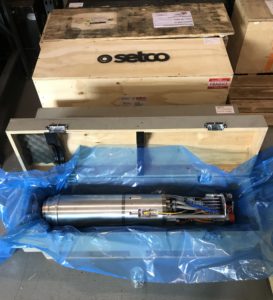
Spindles are highly engineered, precision components that require special attention when storing. Proper storage can significantly impact the spindle’s lifespan and performance, and limit the need for costly spindle repairs. The key elements include:

Second, the spindle needs internal and external lubrication to prevent corrosion. Internally, ensure an adequate amount of oil or grease is present in the bearings. Externally, spray the spindle with a corrosion inhibitor and wrap it in Armor Wrap oil paper or similar VCI (volatile corrosion inhibitor) packaging. We also recommend including desiccant dryers to reduce moisture. And finally, wrap the spindle in plastic to create an additional moisture barrier.
Third, it is critical that spindle storage includes a proper environment to reduce the likelihood of bearing damage and oxidation. The temperature range should be within 65 – 120 degrees F. Note that the temperature should be as stable as possible because when subjected to extreme temperature shifts, the lubricant’s properties can change drastically. The relative humidity level should not exceed 95%, the atmospheric pressure should be 9 to 15 psi absolute, and the spindle storage area vibration should not exceed 1.5 mm maximum. Following these steps will reduce the likelihood of bearing brinelling, corrosion, and lubrication degradation.
And finally, rotate the spindle several revolutions each month. This shaft movement redistributes lubricant that may have settled within the spindle. Not doing so may cause metal-on-metal contact and cause bearing micro-welding, which adversely affects spindle performance.
You’ve invested significant money in keeping spares on hand. This is wise since spares keep your operation running when a spindle goes down. Following these steps will significantly increase the likelihood of a successful spindle installation and an increased MTBF.
Many complex machines can only perform optimally with an appropriate and correctly maintained spindle. Relying on the experts is the best way to ensure spindles function as they should. Setco is a leader in spindle design, manufacturing and repairs, and we supply spindles of all types to support various industries and applications.
Whether you need to purchase new spindles or repair and maintain your current spindles, our skilled technicians and engineers can help. Browse our product selection or contact us to learn more about our services today.